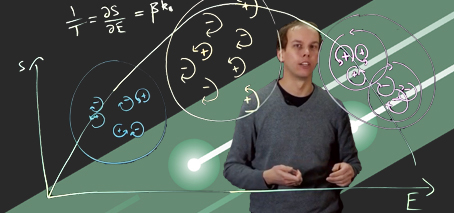—by Dr Shaun Johnstone (Monash University) and Dr Tapio Simula (Swinburne University of Technology)
One of the first things we learn about the absolute temperature scale, measured in degrees Kelvin, is that it’s impossible to get temperatures below Absolute Zero.
But in a recent pair of FLEET studies into turbulence, researchers were working in a regime of precisely that: negative absolute temperatures.
The researchers studied a 2D turbulent system, whose energy congregates in high-energy, long-lived, large-scale vortices.
This is an equilibrium state where entropy decreases as a function of energy, meaning they are characterised by negative absolute temperatures.
The state was described in Lars Onsager’s seminal 1949 paper on 2D turbulence.
“While absolute zero (–273°C or 0 K), the temperature at which all motion in matter stops, is thought to be unreachable, experiments have measured temperatures that are, in fact, negative in absolute temperature scale,” explains author Dr Tapio Simula at Swinburne University of Technology.
“Normally, adding more energy to a system causes the motion of particles to become more chaotic and disordered, thus increasing their temperature. But under certain circumstances, a system may become more ordered when more energy is added, and such a system is then characterised by negative absolute temperature.”
The secret, says researcher Shaun Johnstone of Monash University, is considering temperature as a measure of the entropy of a system, rather than the average velocity, as is usual.
Entropy is a measure of disorder. “A perfectly ordered system has no entropy, while a completely disordered or random system has the highest entropy,“ says Shaun.
Mathematically, as we add energy to the system it will approach an infinite temperature, were the particles are arranged completely randomly.
However if in a bound system you continue adding energy to this randomly configured system, it will begin to develop order again, and we can describe this system as having a negative absolute temperature.
Just beyond infinite temperature the system is said to have an infinitely negative temperature, and it heats toward negative absolute zero, the hottest possible state.
While this may seem like a strange ordering, it is simply a mathematical quirk of our usual definition of temperature.
Norman Ramsey, who used negative absolute temperatures to describe the thermodynamics of nuclear spins in the 1950’s noted that “the apparent artificialness of the above ordering is merely an accidental result of the arbitrary choice of the conventional temperature function.” He noted that if instead our everyday temperatures were described by –1/T, things would make more sense, with the coldest possible temperature at –∞ and the hottest at +∞, passing through 0 as a system is heated.


